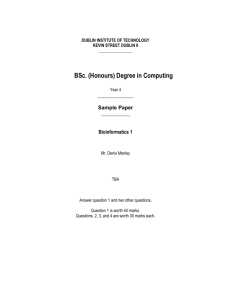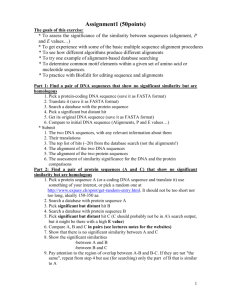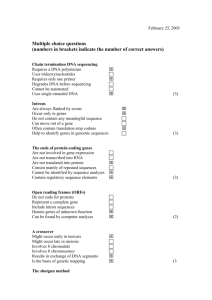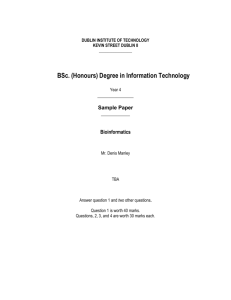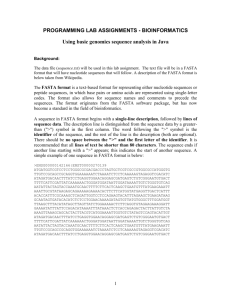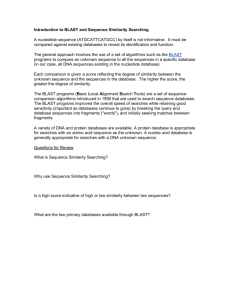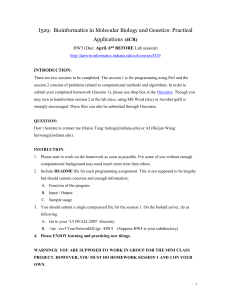S555-6-7-8/413 - Dublin Institute of Technology
advertisement
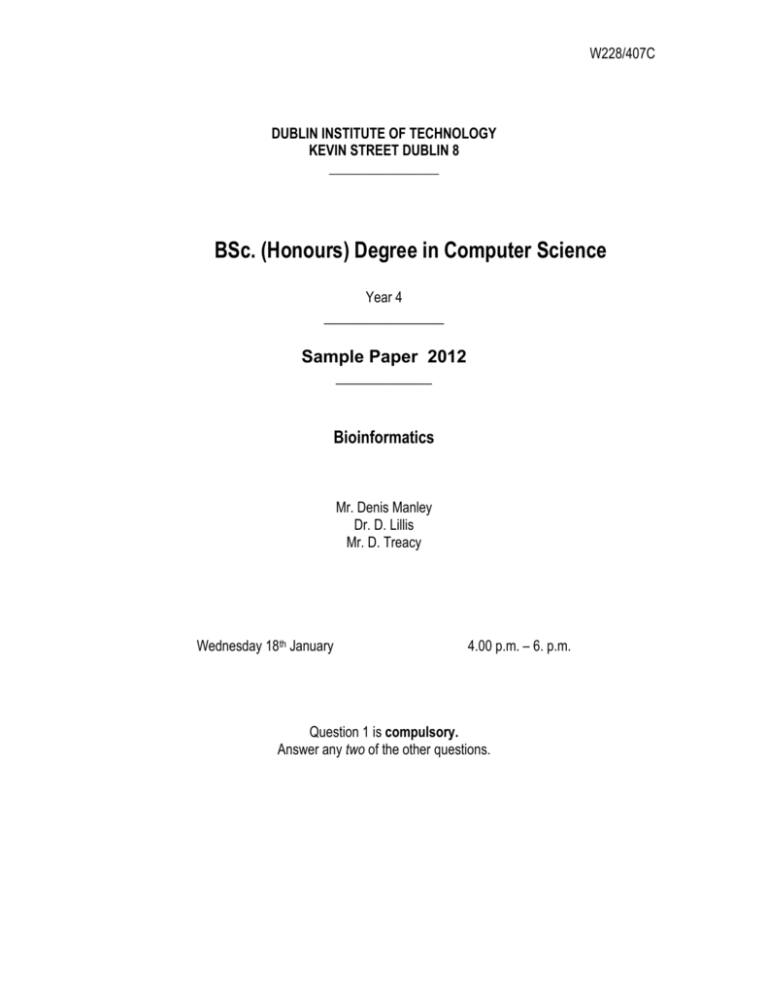
W228/407C DUBLIN INSTITUTE OF TECHNOLOGY KEVIN STREET DUBLIN 8 ________________ BSc. (Honours) Degree in Computer Science Year 4 _______________ Sample Paper 2012 ____________ Bioinformatics Mr. Denis Manley Dr. D. Lillis Mr. D. Treacy Wednesday 18th January 4.00 p.m. – 6. p.m. Question 1 is compulsory. Answer any two of the other questions. W228/407C Q 1. (a) Explain what attributes of Perl which make it one of the major programming languages used in bioinformatics. (10 marks) (b) Given the following Fasta format > Identifier], gene name, author, date of sequence analysis (descriptor line) lines of DNA sequences [ 60 characters in length] Write a perl script that can Extract the descriptor line from two FASTA formatted files. Extract DNA sequence from the files and store in separate arrays. Determine the complementary strand for the first DNA sequences extracted from each file. Determine the ration of matches to non-matches for the each of the primary strands [you can assume that the DNA sequences in both files are the same]. Print a report can will contain the following information: The identifiers and gene names in associated with each file The degree of similarity between the sequences Display in a suitable format the primary and complementary strands associated with each file. (30 marks) Q 2. Explain the different types of point mutations and explain how two types, x-linked and autosomal mutations can be transmitted from parents to their offspring, illustrating your answer with a suitable example. .(30 marks) Q 3. A bacterial genome is very different from an animal genome discuss how these differences cause the transcription/translation of animal genes to be more highly complicated that transcription/translation in bacterial cells (30 marks) Q 4. Discuss how to attempt to find a gene’s protein coding sequence and its core promoter in a eukaryotic genome. (30 marks) Q 5. The dot plot, the PAM and the Bolsom matrices are important tools in the measurement of amino sequences similarity. Discuss how each can contribute to the determination of sequence alignment similarity. (30 marks)

